Research and technology development in green energy has improved in the past four decades, yielding several promising new energy technologies that can reduce global dependence on coal, oil, and natural gas.
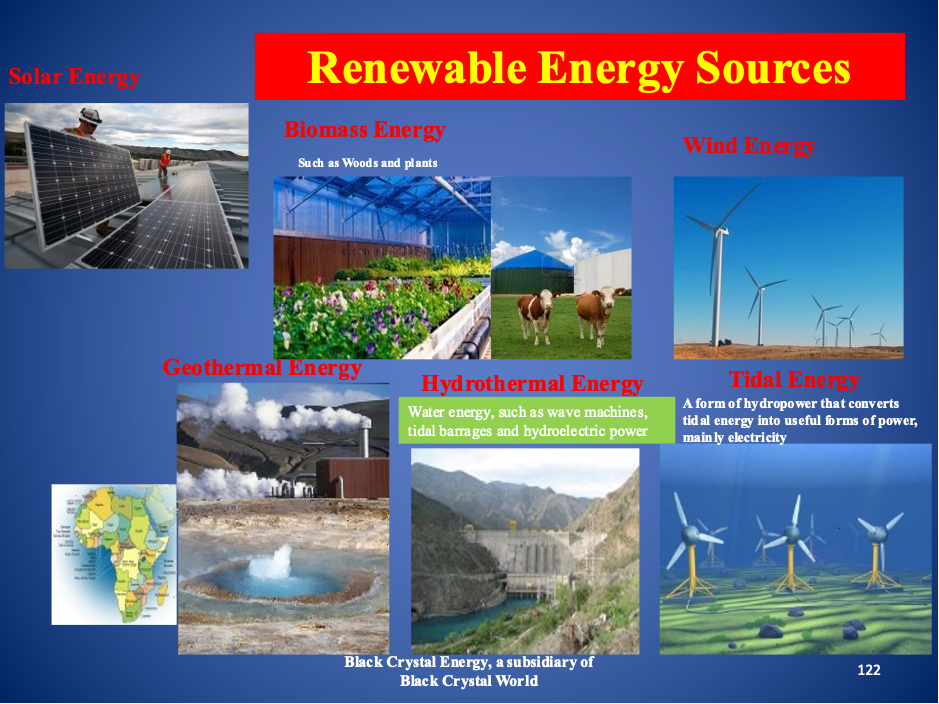
Many alternative energy options are now available in the energy markets. Renewable, non-polluting energy sources continue to grow in popularity as technology improves and consumers’ costs decrease. Renewable energy sources also have a much smaller impact on the environment than fossil fuels, which produce greenhouse gases as a by-product, contributing to climate change.
We are planning for the future through rigorous analysis of various new energy technologies today. With broad consultation with leading scientists and global energy experts, we explore the most viable options for achieving the best sustainable future energy mix. We need an energy mix that is safe, cheap, cost-effective, and capable of reducing the environmental impacts and maintaining the characteristic attribute of a reliable energy source. Renewable energy mix provides the best cost-effective, efficient, environmentally friendly, and cleanest option.
Our company’s wide selection of energy mix products and services for residential, commercial, industrial, and utility uses put us in the best economic position in the energy services industry. At the same time, our impressive growth with corporate, social, and environmental responsibility gives us the edge among competitors. It makes us a contending global player in the renewable energy market. Our desire to focus on solar and wind energy products for residential, commercial, and utility development makes us a contending global player in the renewable energy industry.
Solar (Photovoltaic)
 Both Solar Thermal and Photovoltaic technologies use the Sun as their source of power.
Both Solar Thermal and Photovoltaic technologies use the Sun as their source of power.
While there are two primary types of solar energy technologies—photovoltaics (PV) and concentrating solar-thermal power (CSP), our company is primarily interested in three major areas of Solar technologies research and development. They include the two primary types of solar technologies: photovoltaics (PV) and concentrating solar-thermal power (CSP). The third area of our interest is systems integration, especially with concentrating Solar Thermal Power.
Our goal is to improve solar generating power efficiency, reliability, affordability, and availability to benefit and meet our domestic markets’ needs –primarily the needs of our residential, commercial, and industrial customers on the grid.
- Photovoltaics (PV): PV uses solar panels to earnest the energy from the Sun. Energy from the sunlight is absorbed by the PV cells in the solar panel. This energy creates active electrical charges that respond to pre-arranged internal electrical fields in the cell, causing electricity to flow.
- Concentrating solar-thermal power (CSP): CSP systems use mirrors to reflect and concentrate sunlight onto receivers that collect solar energy and convert it to heat. The energy from the concentrated sunlight heats a high-temperature fluid (liquid salt or liquid oil) in the receiver. The heat generated, also known as thermal energy, can spin a turbine or power an engine to generate electricity or store it for later industrial or residential uses. CSP is used primarily on large power plants commercially.
- Solar systems integration: There are many available solar systems in the market, and they are a. Power tower (arrange mirrors around a.) Central Tower that acts as the receiver), b.) Linear (have rows of mirrors that concentrate the sunlight onto parallel tube receivers positioned directly above them), c.) Thermal and dish/engine (uses a parabolic dish of mirrors to direct and concentrate sunlight onto a central engine that produces electricity) systems.
Let us go, Solar. Clean and safe energy for a pure and clean world. We can make the future bright and better with solar power.
Wind
 Wind Power could be considered “indirect solar power” because this resource is created from atmospheric pressure differentials generated by the Sun.
Wind Power could be considered “indirect solar power” because this resource is created from atmospheric pressure differentials generated by the Sun.
A wind turbine turns wind energy into electricity. Wind turbines are built on land (Onshore) or in large bodies of water like oceans and lakes (offshore). Wind energy is produced from wind flow patterns and speeds that vary across land, oceans, or seas depending on terrain, size of the body of water, vegetation cover, angle of the Sun unevenly heating the atmosphere, irregularities of the earth surface, the rotation of the Earth.
Wind turbines use the surface wind to make electricity. The wind turns the propeller-like blades of a turbine around a rotor, which spins a generator. The generator creates electricity using the aerodynamic force from the rotor blades. When wind flows across the edge of the blades, the air pressure on one side of the blade decreases. The difference in air pressure across two sides of the blade creates both lift and drag. The force of the lift is stronger than the drag, and this causes the rotor to spin. The rotor connects to the generator, either directly (if it’s a direct drive turbine) or through a shaft and a series of gears (a gearbox) that speed up the rotation and allow for a physically smaller generator. This translation of aerodynamic force to rotational force enables the generator to create electricity. A large wind turbine can feed electric power to a large community with as much as 2.5 megawatts. The US Energy Policy Act authorizes a production tax credit of 1.5 cents per kilowatt-hour of wind power generated electricity, and this reestablishes a focus on renewable energy use
Many of the remarkable advances in the wind energy industry over the last centuries come from the use of windmills. The development of high-tech wind turbines on wind farms today is due to the dynamic and cyclic increases in oil gas prices, which renewed greater interest in wind energy power. There are two types of wind-generated energy farms, and they are Offshore and Onshore wind turbines. Wind energy farms are typical on both land and sea. Wind turbines are on land or offshore in large bodies of water like oceans and lakes. These wind turbines operate to produce reliable, efficient, clean electrical power from an abundant, renewable energy resource—the wind.
Wind energy is sustainable energy you can count on. It is cheaper, clean, consistent, and a better alternative for humans, animals, the environment, and their livelihood.
Geothermal
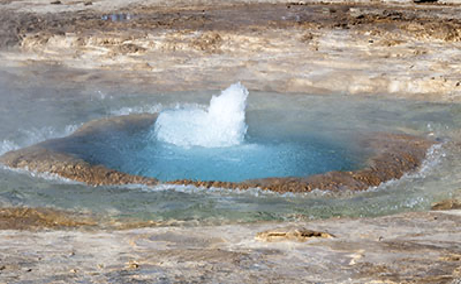 Geothermal energy is renewable heat energy from deep in the earth.
Geothermal energy is renewable heat energy from deep in the earth.
Geothermal energy is efficient, naturally occurring renewable heat energy that emerges deep within the Earth’s crust. It is a clean, efficient energy source because the generated heat is continuously produced inside the Earth and can be used for many purposes, including bathing, heating homes, office building, and generating electricity.
Geothermal energy is produced due to the slow decay of radioactive particles in the Earth’s core, and the decay affects many rocks deep beneath the Earth’s surface. The Earth’s crust itself is broken into several pieces of geological features called tectonic plates. Several miles below the surface, Magma comes to the surface as lava close to the Earth’s surface near the edges of these plates, where many volcanoes occur in an area called the ring of fire. The lava that erupts from volcanoes is partly Magma. Rocks and water absorb heat from Magma deep underground. The magma rocks and water found deeper underground have very high temperatures.
Renewable energy is about safety, efficiency, and environmental friendliness. Geothermal energy qualifies in all these three essential requirements. It is renewable clean energy, and the geothermal power plants emit no greenhouse gasses with a reliable baseload power plant that can produce electricity consistently 24 hours per day / 7 days per week (24/7) regardless of weather conditions. It can be used in industrial and domestic electrical power production without importing any other fuel and leaves little or no carbon footprint.
The word Geothermal has a comprehensive meaning that makes so much energy sense and requires little or no explanation. Geo and thermal mean Earth and heat hence Geothermal energy means —geo (Earth) + thermal (heat). It is the heat energy from within the Earth. The geothermal resources are reservoirs of hot water and intense heat and pressure that exist within deep-seated reservoirs found at varying temperatures, pressures, and depths several miles or more below the Earth’s surface.
To tap the Geothermal energy’s hot steam (which comes to the surface accompanied by highly intensive pressure and hot boiling water, can be used in various applications, including electricity generation, direct usage, including heating and cooling) require high intensive labor and technology. Harnessing this clean, renewable domestic natural energy resource to generate electricity requires drilling wells several miles or more into underground geothermal reservoirs. These geothermal reservoirs are naturally occurring areas of hydrothermal resources. These reservoirs are located deep underground below the Earth and are primarily undetectable above ground.
Geothermal power plants use hydrothermal resources that have both water (hydro) and heat (thermal). Geothermal power plants require high-temperature (300°F to 700°F) hydrothermal resources from dry steam wells or hot water wells. People use these resources by drilling wells into the Earth and then piping steam or hot water to the surface. The hot water or steam powers a turbine that generates electricity. Some geothermal wells’ depths are more than two miles deep.
Geothermal energy finds its way to the Earth’s surface in three ways as volcanoes and fumaroles (holes in the Earth where volcanic gases are released), as hot springs and geysers. Geothermal energy applications vary from geothermal power plants, district heating systems, heat pumps, hot mineral springs, bathing, cooking, and domestic home heating. Some of these applications of geothermal energy use the Earth’s temperatures near the surface, while others require drilling miles into the Earth. The three most common geothermal energy applications are Direct use and district heating systems, Geothermal power plants, and Geothermal heat pumps.
The three most common types of geothermal power plants are:
- Dry steam plants. These plants use steam directly from a geothermal reservoir to turn generator turbines to produce electricity.
- Flash steam plants. These power plants take high pressure with the hot water from deep inside the Earth and convert it to steam that drives generator turbines. When the steam cools, it condenses to water and is injected back into the ground to be used again. Most geothermal power plants are flash steam plants.
- Binary cycle power plants. These types of power plants transfer the heat from geothermal hot water to another liquid. The heat causes the second liquid to turn into steam, used to drive a generator turbine that produces electricity.
A Hydroelectric Powerplant
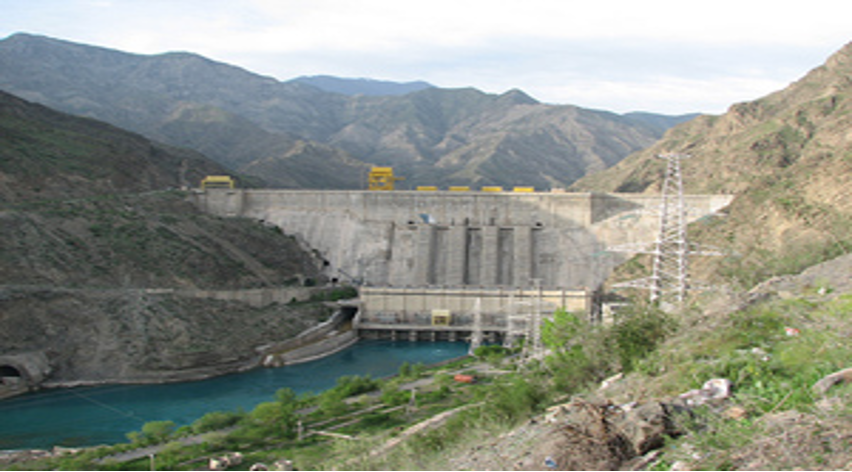 A large hydroelectric power plant has the capacity to supply electricity for a town or region. Hydroelectric power has and continues to play an essential part in developing our Nation’s electric power industry and the economy. Both small and large hydroelectric power developments were instrumental in the early expansion of the electric power industry.
A large hydroelectric power plant has the capacity to supply electricity for a town or region. Hydroelectric power has and continues to play an essential part in developing our Nation’s electric power industry and the economy. Both small and large hydroelectric power developments were instrumental in the early expansion of the electric power industry.
Hydroelectric power comes from constantly flowing water –especially during winter and spring runoff from mountain rivers, streams, and clear lakes. When the water from the mountain runoffs falls by the force of gravity, the water can turn turbines and generators that produce electricity.
Hydroelectric power plants do not use up resources to create electricity or pollute the air, land, or water like many other fossil fuel power plants. It is a reliable, safe, efficient renewable energy resource that provides about 96 percent of the renewable energy in the United States. Other renewable resources include Biomass, geothermal, wave power, tidal power, wind power, and solar power.
A Mini-Hydro
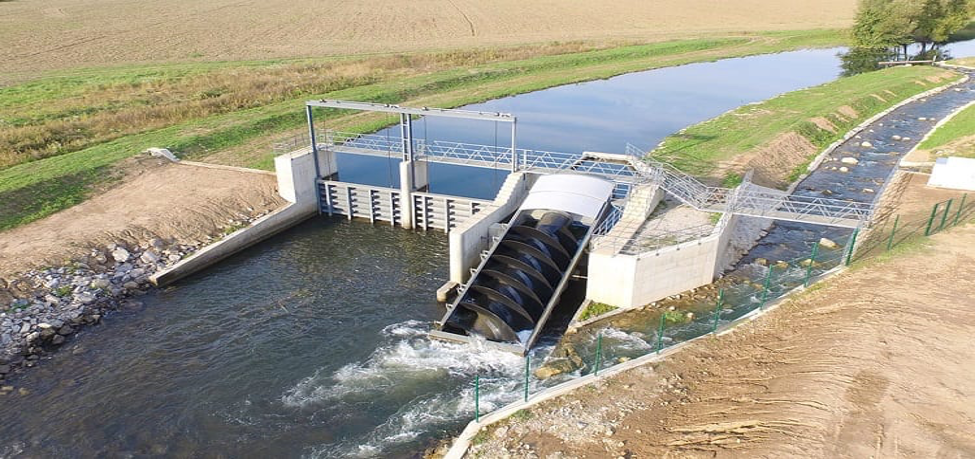
Small hydro resources are like the more extensive big hydroelectric resources found throughout the world with their characteristic kinetic energy and power that move water to generate electricity.
Modern micro-hydropower (MHP) plants use powerful Turbines instead of water wheels and primarily use power generators to produce electricity from a few kW of power up to 100 kW. It usually provides power for a small outlet, such as isolated residential homes, small communities, towns, or rural community industries in remote areas far away from the primary grid. Mini-hydropower is a power plant with a capacity of more than 100 kW, while micro-hydropower plants have a total capacity of less than 100kW.
A small hydro-power plant may have a generating capacity of up to 25 megawatts (MW). Most small hydro-power plants are “run-of-river” schemes. The electrical power is generated only when enough water is available from the river or stream. However, the electrical power generation ceases when the stream/river flow reduces below the design flow capacity value, as the water flow must be consistent. If it does not flow through the intake structure into the turbine, the tendency to generate electrical power diminishes.
Source: Enviroinc.com
Composting
 Composting involves a unique aerobic process where organic materials are biologically decomposed, producing compost, carbon dioxide, water, and heat. The heat generated during the composting operations is used as a renewable source of energy.
Composting involves a unique aerobic process where organic materials are biologically decomposed, producing compost, carbon dioxide, water, and heat. The heat generated during the composting operations is used as a renewable source of energy.
Typically, a conventional composting process comprises four critical microbiological stages concerning temperature. The stages are mesophilic, thermophilic, cooling, and maturation. The final step is when the structure of the microbial community changes and the final product is compost. The important thing is that the heat generated during composting processes can be reused as a renewable energy source.
Biomass
The fuel of the future. This term biomass applies to a fuel source rather than a specific generation technology.
Black Crystal Energy is leading the global energy transition campaign by encouraging gradual use of energy mix, stressing the significance of renewable energy sources such as Biomass, a renewable natural gas. Biomass energy is unique renewable energy fuel generated from biological (anaerobic digestion) or thermal conversion (for example, combustion) of biomass resources.

Biomass is the decomposed materials derived from plants and animals that use sunlight to grow. It comes from various natural renewable sources of materials, including wood from natural plants in the forests, prairies and woodlands, forestry plantations, grass, moss, forestry materials, and other residues. It may also include organic industrial, human, and animal wastes, agricultural residues such as straw, stover, cane trash, green agrarian waste, and agro-industrial waste such as sugarcane bagasse and rice husk. Biomass renewable sources also include animal wastes such as cows and sheeps’ dungs, animal manure, agricultural residues such as straw, stover, cane trash, green agrarian waste, and agro-industrial waste such as sugarcane bagasse and rice husk. Industrial wastes, such as black liquor from manufacturing paper mills, sewage, municipal solid wastes (MSW), landfills, and food processing wastes, are biomass materials. However, biomass energy is a form of renewable energy fuel generated primarily through biomass materials’ biological (anaerobic digestion) or thermal conversion (combustion).
Biomass materials conversion into energy fuel is a unique new technology for producing Renewable Natural Gas (RNG). RNG is produced by capturing and processing the methane emitted from organic sources, including animal waste, wastewater treatment plants, food waste, and landfills that would otherwise have been released into the environment as the organic material decays. Converting the biomass materials into helpful, clean, and valuable energy is like the natural processes, only faster in the production plant but converted slowly in nature. Biomass conversion systems reduce greenhouse gas emissions in two ways. Heat and electrical energy are generated during the Biomass conversion—Biofuel gas generation minimizes the dependence on electrical power plants based on fossil fuels.
Biomass materials are transformed into clean energy and fuels by various technologies, ranging from conventional combustion to advanced biofuels technology processes. Besides recovery of substantial energy, these technologies can substantially reduce the overall biomass waste quantities requiring final disposal, which can be better managed for safe disposal in a controlled manner while meeting the pollution control standards.
The greenhouse gas emissions are reduced significantly by preventing methane emissions from decaying Biomass. Moreover, biomass energy plants are highly efficient in harnessing untapped energy sources from biomass resources and help develop industries in rural areas. Biogas that would ordinarily be out into the environment can instead be captured, processed, and consumed as a lower-carbon natural gas alternative.
Fuel Cells
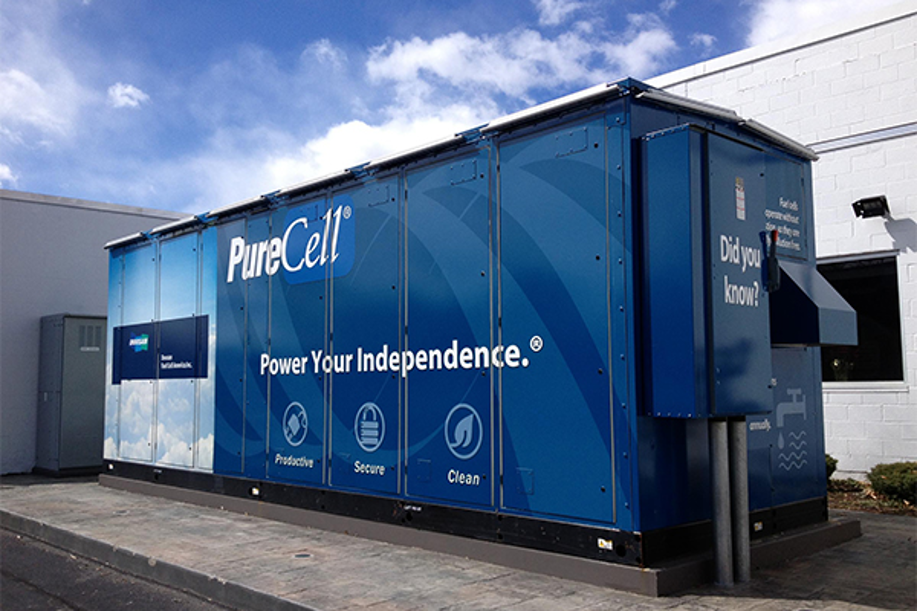 A fuel cell uses an electrochemical process to convert the chemical energy in fuel to electricity. In contrast to reciprocating engines and gas turbines, fuel cells generate electricity without combusting the fuel. It uses the chemical energy of common elements such as hydrogen or other fuels to cleanly and efficiently generate electricity. If hydrogen is the fuel of choice, electricity, water, and heat are the only by-products. Learn more
A fuel cell uses an electrochemical process to convert the chemical energy in fuel to electricity. In contrast to reciprocating engines and gas turbines, fuel cells generate electricity without combusting the fuel. It uses the chemical energy of common elements such as hydrogen or other fuels to cleanly and efficiently generate electricity. If hydrogen is the fuel of choice, electricity, water, and heat are the only by-products. Learn more
Fuel cells have a variety of applications; they can provide power for systems as large as a utility power station, a building complex, residential subdivision units, or a small laptop computer.
The first practical application for fuel cells emerged in the 1950s when fuel cells were used to provide onboard power for spacecraft. Fuel cells continue to be used in space exploration. Still, over the past few decades, the technology has migrated to other applications, including large vehicles, buildings, and stationary power generation stations. For static power, fuel cells are used for distributed generation (electricity only) and are also configured for combined heat and power (C.H.P.).
